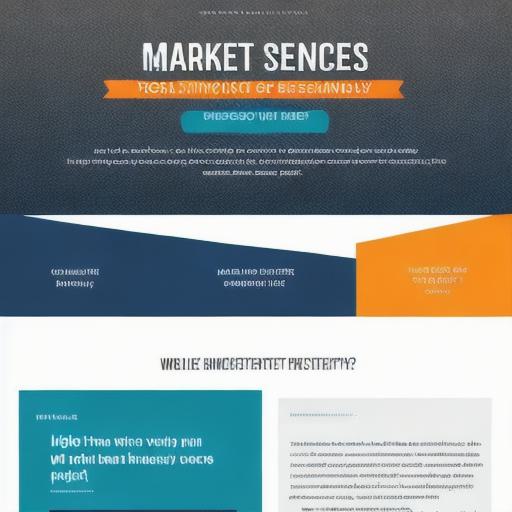When it comes to marketing and communications, many people use these terms interchangeably. However, they are two distinct concepts with different goals, methods, and outcomes. In this article, we will explore the key differences between marketing and communications, and how you can leverage both to achieve your business objectives.
What is Marketing?

Marketing is a process that involves identifying, anticipating, and satisfying customer needs and wants through the creation, promotion, and distribution of products or services. The primary goal of marketing is to attract, engage, and retain customers, with the ultimate aim of generating revenue for the business.
Some common elements of marketing include:
- Market Research: This involves gathering information about your target market, such as their demographics, behaviors, preferences, and pain points.
- Product Development: This involves creating products or services that meet the needs and wants of your target market, based on your research findings.
- Branding: This involves developing a unique identity for your business, including its name, logo, slogan, and messaging, to help differentiate it from competitors and build customer loyalty.
- Advertising: This involves promoting your products or services through various channels, such as print, digital, social media, events, and sponsorships, to reach and engage with your target market.
- Sales: This involves persuading potential customers to purchase your products or services, typically through a sales pitch or meeting.
- Distribution: This involves getting your products or services into the hands of your customers, either by selling them directly or through intermediaries such as retailers or distributors.
Marketing is often seen as a push strategy, where the business takes the initiative to reach out and convince potential customers of its value proposition. However, it can also be a pull strategy, where the business creates demand for its products or services by highlighting their benefits and unique features.
What is Communications?
Communications, on the other hand, involve exchanging information between people, groups, or organizations to facilitate understanding, decision-making, and collaboration. The primary goal of communications is to build relationships and trust, rather than to generate revenue or promote products or services.
Some common elements of communications include:
- Internal Communications: This involves communicating with employees, stakeholders, and other members of the organization to share information, ideas, and feedback, and to build a sense of community and collaboration.
- External Communications: This involves communicating with customers, suppliers, partners, investors, media, and other external audiences to provide updates, feedback, and support, and to build brand awareness and reputation.
- Public Relations: This involves building and maintaining positive relationships with the media and the public, by crafting and distributing press releases, news articles, social media posts, and other communications that showcase the business’s values, mission, and achievements.
- Crisis Communications: This involves managing negative or crisis situations, such as product recalls, data breaches, or natural disasters, by providing transparent, accurate, and timely information to all relevant stakeholders, and by taking appropriate action to address the issue and prevent further harm.

Communications are often seen as a pull strategy, where the business responds to the needs and interests of its stakeholders, rather than actively seeking them out. However, they can also be a push strategy, where the business proactively shares information and insights that are relevant and valuable to its audience.
Marketing vs Communications: A Comparison
Despite their differences, marketing and communications often work hand in hand to achieve the same goals of attracting, engaging, and retaining customers, building brand awareness and reputation, and generating revenue for the business. Here are some key similarities and differences between marketing and communications:
Similarities:
- Target Audience: Both marketing and communications target specific audiences based on demographics, behaviors, preferences, and pain points, to create value and build relationships with them.
- Messaging: Both marketing and communications use clear, concise, and compelling messaging that resonates with the audience, whether it’s through advertising, public relations, or internal communications.
- Channels: Both marketing and communications leverage various channels to reach and engage with their target audience, including print, digital, social media, events, sponsorships, email, and more.
- Metrics: Both marketing and communications measure their impact through various metrics, such as website traffic, click-through rates, conversion rates, engagement rates, brand awareness, sentiment analysis, and more.
Differences:
- Goals: Marketing aims to attract, engage, and retain customers, while communications aim to build relationships and trust.
- Timing: Marketing is often more proactive and timed to specific events or promotions, while communications are often more reactive and respond to the needs and interests of the audience.
- Tone: Marketing messaging can be more directive and persuasive, while communications messaging can be more collaborative and conversational.
- Audience: Marketing targets a wider range of potential customers, while communications target specific stakeholders within and outside the organization.
- Channels: Marketing often uses paid channels to reach its audience, while communications often rely on organic or earned channels.
Marketing vs Communications: Best Practices
To leverage both marketing and communications effectively, it’s important to have a clear understanding of their roles and responsibilities, as well as their interdependencies and synergies. Here are some best practices that can help you achieve your business objectives:
- Develop a Marketing and Communications Plan: A comprehensive plan that outlines the goals, strategies, tactics, budget, timeline, and performance metrics for both marketing and communications, and that aligns with the overall business strategy and objectives.
- Conduct Market Research: Gather data and insights about your target audience, their needs, preferences, and pain points, and use this information to inform your marketing and communications strategies.
- Create a Unique Value Proposition: Develop a compelling value proposition that differentiates your business from competitors and resonates with your target audience, and that guides your marketing and communications messaging and tactics.
- Build a Strong Brand Identity: Establish a consistent and recognizable brand identity across all channels and touchpoints, including logo, slogan, tone of voice, visuals, and messaging, to build trust and loyalty with your customers.
- Leverage Both Paid and Organic Channels: Use a mix of paid and organic channels to reach your target audience, depending on their preferences, behaviors, and pain points, and to achieve the best return on investment for your marketing and communications efforts.
- Measure and Optimize Your Performance: Continuously track and analyze your performance metrics, such as website traffic, conversion rates, engagement rates, brand awareness, sentiment analysis, and more, and use this data to optimize your strategies and tactics based on what works best for your business and audience.
- Collaborate and Integrate Marketing and Communications: Foster a culture of collaboration and integration between marketing and communications teams, so that they can work together seamlessly to create cohesive and effective messages and campaigns that resonate with the audience and achieve the desired outcomes.
Marketing vs Communications: Real-Life Examples
To illustrate the differences and similarities between marketing and communications, let’s look at some real-life examples from different industries and contexts.
- Coca-Cola: Coca-Cola is a well-known brand that has been around for over 130 years. Its marketing strategy focuses on creating emotional connections with its customers through advertising campaigns that highlight the joy, happiness, and togetherness associated with Coke. However, its communications strategy also involves engaging with stakeholders within and outside the organization, such as employees, suppliers, regulators, and activists, to address their concerns and build trust. For example, Coke’s "Share a Coke" campaign encouraged consumers to find personalized Coke bottles with their names on them, which not only generated buzz and sales but also fostered a sense of community and belonging among customers.
- Apple: Apple is another iconic brand that has built its reputation on innovative products, sleek design, and powerful marketing messages. Its marketing strategy targets a wide range of potential customers, from tech enthusiasts to casual users, through advertising campaigns that showcase the benefits and features of its products. However, its communications strategy also involves engaging with stakeholders within and outside the organization, such as investors, regulators, and competitors, to address their concerns and build trust. For example, Apple’s "Think Different" campaign featured influential figures from science, art, and technology who had made a difference in the world, which not only inspired customers but also positioned Apple as a leader in innovation and creativity.
- Zappos: Zappos is an online shoe and clothing retailer that has built its brand on customer service, fun culture, and social responsibility. Its marketing strategy targets a wide range of potential customers, from fashion-forward millennials to budget-conscious shoppers, through advertising campaigns that highlight the unique features and benefits of its products. However, its communications strategy also involves engaging with stakeholders within and outside the organization, such as employees, suppliers, regulators, and charities, to build trust and foster a sense of community. For example, Zappos’ "10X" culture emphasizes going above and beyond expectations in everything from customer service to internal communications, which not only creates a positive work environment but also inspires customers to choose Zappos over competitors.
- Southwest Airlines: Southwest Airlines is a low-cost airline that has built its brand on affordability, reliability, and fun culture. Its marketing strategy targets a wide range of potential customers, from budget-conscious travelers to adventurous explorers, through advertising campaigns that highlight the unique features and benefits of its flights. However, its communications strategy also involves engaging with stakeholders within and outside the organization, such as employees, unions, regulators, and communities, to address their concerns and build trust. For example, Southwest’s "Wanna Get Away?" campaign featured playful and humorous messaging that encouraged customers to book flights and have fun, which not only generated sales but also positioned Southwest as a leader in customer service and innovation.
Marketing vs Communications: Conclusion
In conclusion, marketing and communications are two essential functions that work hand in hand to achieve the same goals of attracting, engaging, and retaining customers, building brand awareness and reputation, and generating revenue for the business. While they have some differences in their approach, timing, tone, audience, channels, and metrics, they also share many similarities in their target audience, messaging, channels, goals, and best practices. To leverage both marketing and communications effectively, it’s important to have a clear understanding of their roles and responsibilities, as well as their interdependencies and synergies, and to develop a comprehensive plan that aligns with the overall business strategy and objectives.




